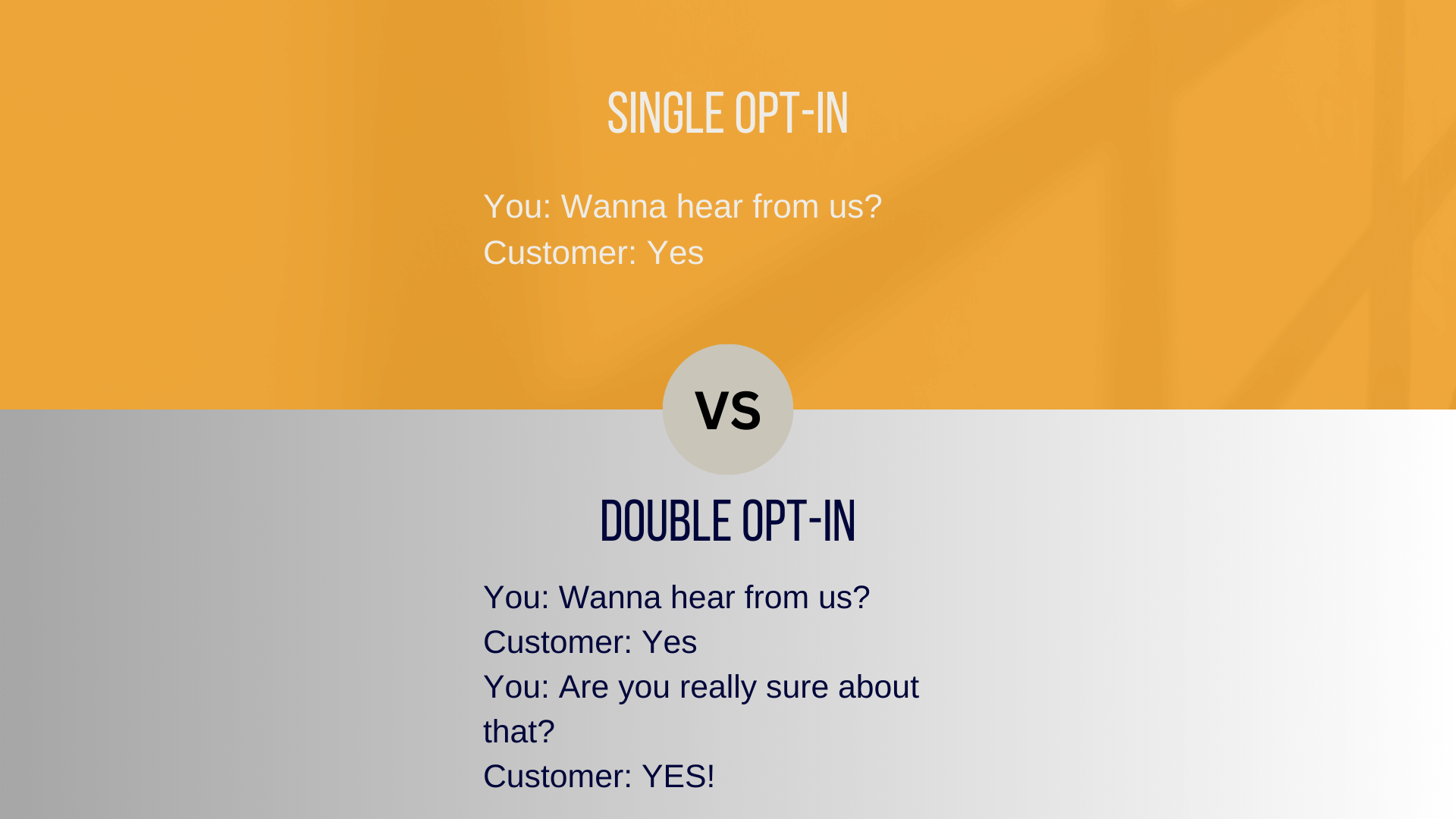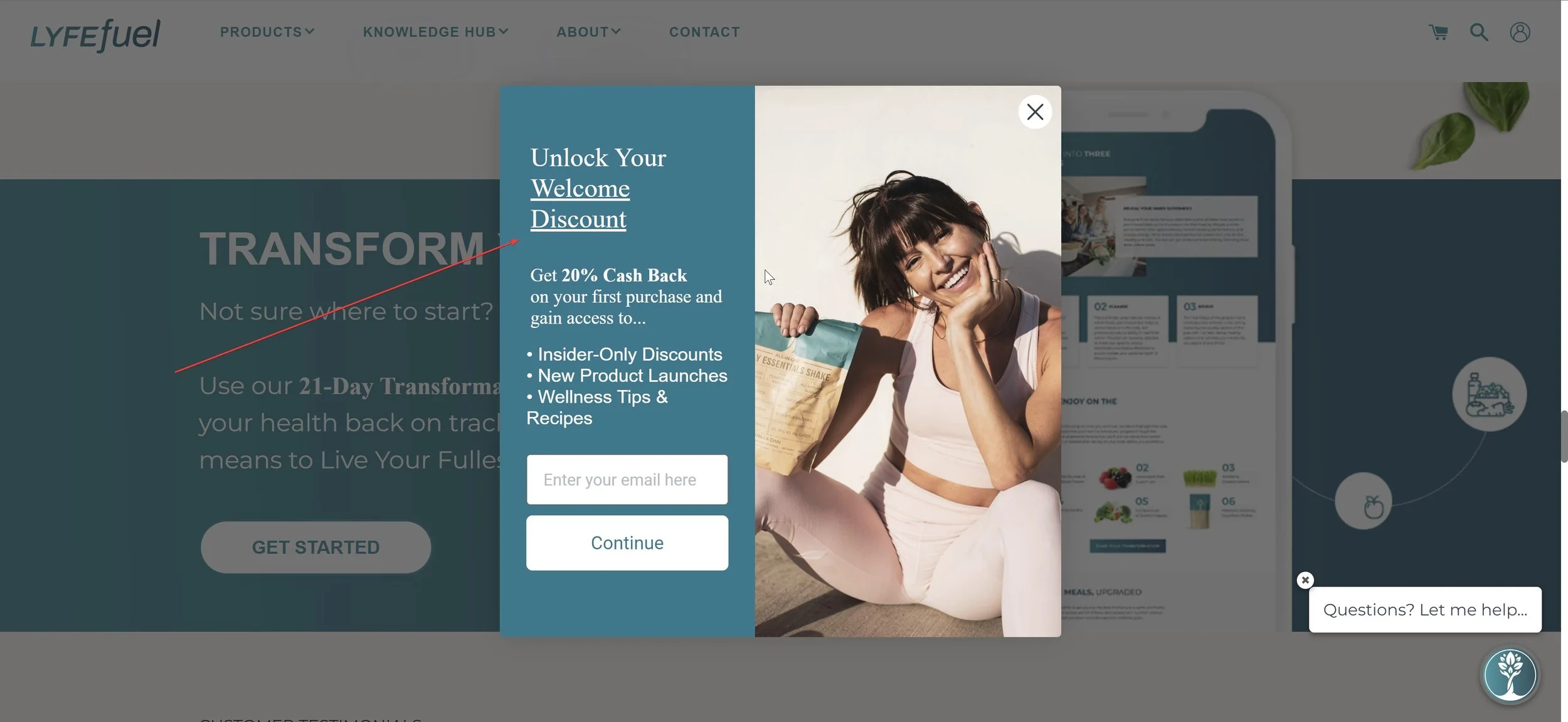Single Opt-In vs. Double Opt-In: Why the Easy Route is Best in Email Marketing
If you own or work for an e-commerce brand, then there’s a good chance that you’ve come across the double opt-in vs. single opt-in debate.
However, just in case you haven’t, I’ll quickly go over what they mean before telling you why I strongly believe single opt-in is the better option for e-comm brands.
What They Mean
Double opt-in and single opt-in simply refers to how many steps a person needs to take to join your email list.
Single opt-in is when they just need to type their email address in your sign up form and click on submit. In other words, they opt-in one (single) time and automatically join your email list.
sample of email sign up form
With double opt-in, however, after clicking submit, they receive a further confirmation email from you and they need to click on that email before they’re allowed to join your email list. In other words, they opt-in twice - first by clicking submit on the sign up form, and second by clicking on the confirmation email.
sample of confirmation email
Why Brands Use Double Opt-In
Weirdly enough, most e-comm brands that currently use double opt-in are not doing it intentionally. By default, email marketing platforms like Klaviyo, Mailchimp, and Omnisend leave double opt-in turned on for new accounts.
The first person to create an account for an e-comm brand is usually the founder of the brand. Since they’re new to email marketing, such a founder is likely to not yet know what double opt-in is, why it should be turned off, or even how to turn it off.
That’s a scenario I’ve seen so many times.
That said, for the e-comm brands deliberately using double opt-in, the biggest reason is securing their email list. Website visitors are often promised a discount code if they sign up for email marketing. This incentivizes some of them to simply make up a fake email address, get the discount code, and bounce.
The major problem with this practice is that, first, the e-comm brand loses profit margin without getting the correct email address for remarketing efforts. More importantly, all those fake emails will remain on your email list and if you get enough of them, you will start having email deliverability problems i.e. your email campaigns will start going to spam.
Double opt-in prevents this by stopping people from joining your email list until they’ve clicked on the confirmation email sent to the email address they provided - thereby confirming that the email address is real and in use.
By extension, using double opt-in can also prevent fake bots from signing up to your email list - and trust me, that happens a lot more than you’d think.
Another reason e-comm brands use double opt-in is lead quality. It is believed that a lead (potential customer) who has gone through the stress of opting into your email list twice is likely to be more interested in your offer than those who opted in just once. Essentially, you’ve made them jump through hoops to prove they’re serious about receiving your emails.
Why Single Opt-In is Better For E-Commerce
Okay, this is the fun part.
This is the part where I take apart the argument against single opt-in and also show you its unique benefits for e-comm brands. Let the fun begin!
The Security Myth
The idea of security surrounding double opt-in has always been its biggest draw, but the implied suggestion that single opt-in can’t also be secure is simply not true.
Above, I described a situation where someone signs up with a fake email address just for the purpose of receiving the discount code or any other incentive you’re offering. Well, that only applies if you display the discount code right there on your website - a mistake I always warn clients against.
Step 1
Step 2
What you should do instead is incentivize them to put in their correct email by sending the discount code only to the email address they give you. Doing this ensures you avoid fake emails.
Moreover, list cleaning (removing inactive email addresses from your email list) is something that should be done on a monthly basis. So even if some fake emails do manage to find their way to your email list, your list cleaning will get rid of them before they do significant damage to your business.
By taking these steps, you can make single opt-in just as secure as double opt-in.
However, if you’re wondering why you should go through all these steps to strengthen the security of single opt-in when you can simply use double opt-in, here’s the most important reason.
Cost Effectiveness
Customers don’t just stumble upon your website, do they? Certainly not if you’re running an e-commerce business.
You spend so much of your time and/or revenue on customer acquisition efforts that drive potential customers to your website - with the hope that they’ll not only purchase a product, but also give you their email address so you can use email marketing to make them repeat buyers.
Unfortunately, only a fraction of your website visitors will ever sign up for your email marketing - but you know what makes it even less likely they’ll sign up? Double opt-in.
The confirmation email often gets delivered to the spam folder - meaning that out of the few website visitors who chose to sign up, many won’t even see the confirmation email and therefore won’t get added to your email list.
Here’s the kicker though - whether or not a website visitor joins your email list, you’ve already paid a customer acquisition cost for them, and you can’t get a refund.
Since you’re paying for that visitor either way, doesn’t it make more sense to make it as easy as possible for them to join your email list and become repeat buyers?
More on that in the next paragraph…
User Experience
It’s no secret that we humans are lazy. Adding friction to any process makes it less likely that people will complete it - and adding friction is exactly what you’re doing if you use double opt-in instead of single opt-in.
Even if the confirmation email doesn’t go to spam, the simple fact that you’re making people take two steps instead of one means many potential [repeat] customers will drop off. And this is proven by numerous A\B tests which have proven that email lists with single opt-in always grow at a much faster rate than email lists with double opt-in.
Now, it’s reasonable to feel that if a visitor doesn’t want to go through both steps, that means they weren’t really interested in the first place. However, this is the wrong way to look at it, for two reasons.
One, given the sheer number of emails you already receive, when’s the last time you just gave someone your email address even though you weren’t really interested in what they have to offer? I certainly wouldn’t do that. Therefore, even if a visitor opts in only once (i.e. single opt-in), they’ve already shown enough interest to join your email list.
Two, something we need to remember is that these are new customers. They don’t yet know much about your brand or have any brand loyalty, so you can’t fully expect them to be willing to jump through hoops for you just yet.
It’s your job to get them on your email list and build up that brand loyalty by giving them awesome products and personalized email marketing. However, if you indirectly reject them by turning on double opt-in, you forever lose the chance to sell them any products and create brand loyalty.
To conclude, double opt-in is like asking someone out on a date, and then asking them twice if they’re really sure they want to come (that’d be weird, no?)
Double opt-in means you’re essentially playing hard to get with potential customers that you’ve already paid for. Yes, it's thorough, but the cost-effectiveness and UX benefits of single opt-in are far more rewarding for any fast-growing e-comm brand.
P.S. If you’re looking to discuss your e-comm brand’s email marketing and get yourself a free audit, just touch the orange button below.





